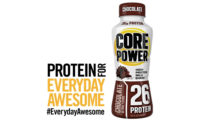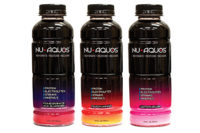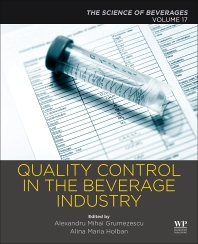Water is the most abundant element in the human body, a fact that many learn in grade school. But, water isn’t the element that builds muscles, hair, bone and many other tissues in the body — that would be protein. “[A]fter water has been excluded, 75 percent of your body weight consists of protein,” an article from Iowa State University’s Extension and Outreach website titled “Protein” states. “Unlike carbohydrates and fat, the body does not generally store protein, thus it is essential in the diet.”
According to Grace Harris, director of applications and new business at Hilmar Ingredients, Hilmar, Calif., protein is an essential nutrient for all consumers, not just body-builders and athletes. “Everyone needs protein to sustain good muscle structure and overall health,” she says. “To support agility and movement, it is important to feed the body with critical nutrients.”
As consumers have come to see the necessity and benefits of protein in their diets and want to consume more, the beverage industry has experienced an explosion of functional beverages with higher amounts of protein.
“Protein is one of the hottest ingredients in any product in general,” says Chuck Walkley, chief executive officer of New Whey Protein, Oviedo, Fla. “The protein beverage category was about $2.1 billion in 2013, which was a 223 percent growth rate between 2008 and 2013. The category is expected to be $4.1 billion by 2018, a 90 percent growth rate between 2013 and 2018,” he adds, citing data from Chicago-based Mintel.
According to Vicky Fligel, business development manager at Glanbia Nutritionals, Fitchberg, Wis., convenience is a key driver in the success of protein-enhanced beverages as it provides an on-the-go format for protein consumption that fits the lifestyle of many consumers.
Nina Hughes-Likins, senior marketing manager at Synergy Flavors Inc., Wauconda, Ill., also notes the consumer trends that are driving the protein beverage market. “Consumers recognize the health benefits of protein in their diets, and many gravitate toward beverages for ease-of-use, ranging from powders for shakes or [ready-to-drink] (RTDs), offering several flavors in a variety of [RTD] options,” she says. “In addition, many consumers have embraced protein to help achieve their diet goals by providing balanced nutrients in a single serving and curbing hunger, allowing dieters to feel better while dieting and gaining nutrition.”
Very versatile
According to experts, protein is an ingredient that can be utilized in many beverage categories, and as the ingredient has gained popularity with consumers, beverage manufacturers are utilizing its versatility to meet demands.
“With protein such a popular ingredient and transitioning from the niche to the mainstream, suppliers and manufacturers need to be forward-thinking, continuously driving developments to expand the choice of high-quality proteins and end products available to consumers,” Glanbia Nutritionals' Fligel says. “Protein can be added to any type of beverage formulation process such as cold fill, hot fill, aseptic and retort, and is typically incorporated in the early stages.”
Synergy Flavor’s Hughes-Likins also notes the ingredient’s capabilities in beverages. “Beverage manufacturers have been utilizing protein in a variety of protein-based drinks that appeal to a wide array of consumers: sports nutrition beverages, weight-loss shakes, meal replacement shakes, smoothies, coffee and tea protein-enhanced RTDs, and endurance drinks,” she says.
CP Kelco’s Manager of Technical Services Wanda Jurlina adds that although protein is commonly used in neutral pH beverages, the company has seen an increase in companies looking to formulate low pH beverages with the nutrient. “This is a market that has been huge in other areas before, but not in the United States, but we’ve seen an increase here and we’re expecting it to grow,” she says.
Purposeful plants
With the attention of new consumer segments, protein suppliers are receiving more demands for alternative varieties of proteins. “Consumers are asking for food companies to keep sustainability at the forefront of their want list,” explains Kati Ledbetter, manager of beverage applications for ADM/WILD Flavors and Specialty Ingredients, Chicago. “As a result, plant-based proteins are increasingly important.”
Synergy Flavor’s Hughes-Likins notes that whey protein concentrates and isolates are the most popular forms of protein used in beverages, but adds that plant-based proteins are on the rise, originating from pea-, soy- and hemp-based sources.
Glanbia Nutritionals’ Fligel also notes the sector’s significant growth and says that Glanbia Nutritionals offers several proteins to accommodate this trend. “For vegan and gluten-free, the HarvestPro line of flax, chia and pea proteins offer the clean label and appealing, smooth texture sought by consumers, as well as excellent nutritional properties, including high levels of clean-tasting protein,” she explains.
ADM's Ledbetter notes that some plant-based proteins can add additional value-added traits to a beverage formulation. “Using plant-based proteins in unique ways can increase the overall protein content and health benefits associated with the finished beverage,” she says.
According to Ledbetter, ADM offers several plant-based proteins, including soy isolates and concentrates, edible bean powders, nuts and nut butters, and wheat protein isolates.
Jean Heggie, strategic market lead at DuPont Nutrition and Health, Wilmington, Del., notes that the company offers soy proteins and these proteins offer additional benefits to beverage manufacturers and consumers alike. “Soy protein is more stable and predictable in pricing and supply and is an economic, functional and nutritional alternative to traditional protein sources,” she says. “It can be used as an effective tool to hedge against market volatility of traditional proteins and create products that are more economic, while meeting the taste and nutrition expectations of consumers.
“This approach has worked extremely well for beverage marketers, as proteins tend to be a significant cost contributor to a beverage formulation,” she continues. “With soy protein, they can often reduce their reliance on volatile and more expensive dairy proteins, while formulating products with superior sensory and nutritional properties.”
DuPont’s Heggie notes that sustainability concerns for some proteins are driving the growth of plant-based proteins. “In the future, population growth, emerging market growth and development of food processing industries worldwide are projected to strain traditional protein supplies, namely meat, milk and egg, making them too costly for some consumers,” she explains. “It is anticipated that plant-proteins, such as soy protein, will play a bigger role in meeting the protein needs of a growing population.”
However, plant-based proteins also are being utilized to offer blended protein options. According to Heggie, the company has seen an increasing interest in blending, particularly dairy and soy, proteins to obtain a high protein level in a finished beverage. “Blending diary and soy proteins offers beverage manufacturers many advantages,” she says. “Nutritionally, it has been shown that blends of dairy and soy proteins are more effective in building muscle mass, by extending the time, post-exercise, when muscle building can occur.
“Manufacturers can also drive better formula economics by blending soy and dairy proteins, than using dairy proteins alone,” she continues. “Finally, from a sensory standpoint, in high-protein beverages, blends of dairy and soy proteins result in better hedonic performance (improved consumer liking) than beverages based on singular protein sources.”
However, Heggie adds that market research indicates that most consumers most often are looking for the amount of protein delivered by a beverage, rather than the source of the protein. “In a recent study published by Health Focus International about protein attitudes, they reported that 46 percent of consumers preferred consuming a combination of different protein sources, 30 percent had no particular preference based on source and 16 percent paid little attention to the details of their protein intake,” she says. “Only 8 percent indicated that they were very particular about the sources of protein they consumed.”
Facing formulation
As demand for protein beverages grows, beverage manufacturers need to be aware of the challenges they might be faced with during formulation. Experts agree that it is essential to select the correct type of protein for the beverage.
“Formulating beverages with protein can present various challenges if they are not processed in the necessary conditions,” Glanbia Nutritionals’ Fligel says. “For example, manufacturers can experience issues relating to gelling, graininess, color and flavor if the wrong type of protein is used in the wrong way.”
DuPont’s Heggie agrees that when formulating RTD beverages, viscosity, mouthfeel and stability are the biggest challenges of working with proteins.
Synergy Flavor’s Hughes-Likins adds that bitterness is another challenge for beverage manufacturers when dealing with proteins. “Decreasing the amount of the ingredient is helpful; however, that also decreases the efficacy of the product,” she says.
CP Kleco’s Jurlina also notes the importance of finding the right protein for the job. “Choosing the type of protein you’re going to go with, the initial decision is based on the target market you’re going after,” she explains. “From there, once you know what market you’re going after…then the decision is what flavors are you going after.”
The formulation’s pH also is crucial. “You want to make sure that the supplier knows what type of pH the product is,” Jurlina says.
Additionally, Hilmar’s Harris notes that protein can have an effect on the flavor of a final product as well. “You must start with good heat-stable proteins and dial in an appropriate stabilizing system,” she says. “Pay attention to flavor, too, as you increase the amount of protein in a formula. Combinations of protein types can benefit flavor as well as stability.”
Despite these challenges, protein-enhanced beverages in all styles and flavors are expected to be a continuing trend.
“Protein is here to stay as consumers become more educated on the benefits that it offers,” Glanbia Nutritionals’ Fligel says. “Protein fortification of beverages will continue to rise, thanks to their on-the-go format and the convenience they provide for consumers’ busy lifestyles. The ability to address diverse health and well-being nutritional needs in an easy delivery method will continue to drive demand for protein-fortified beverages across various market sectors.”







